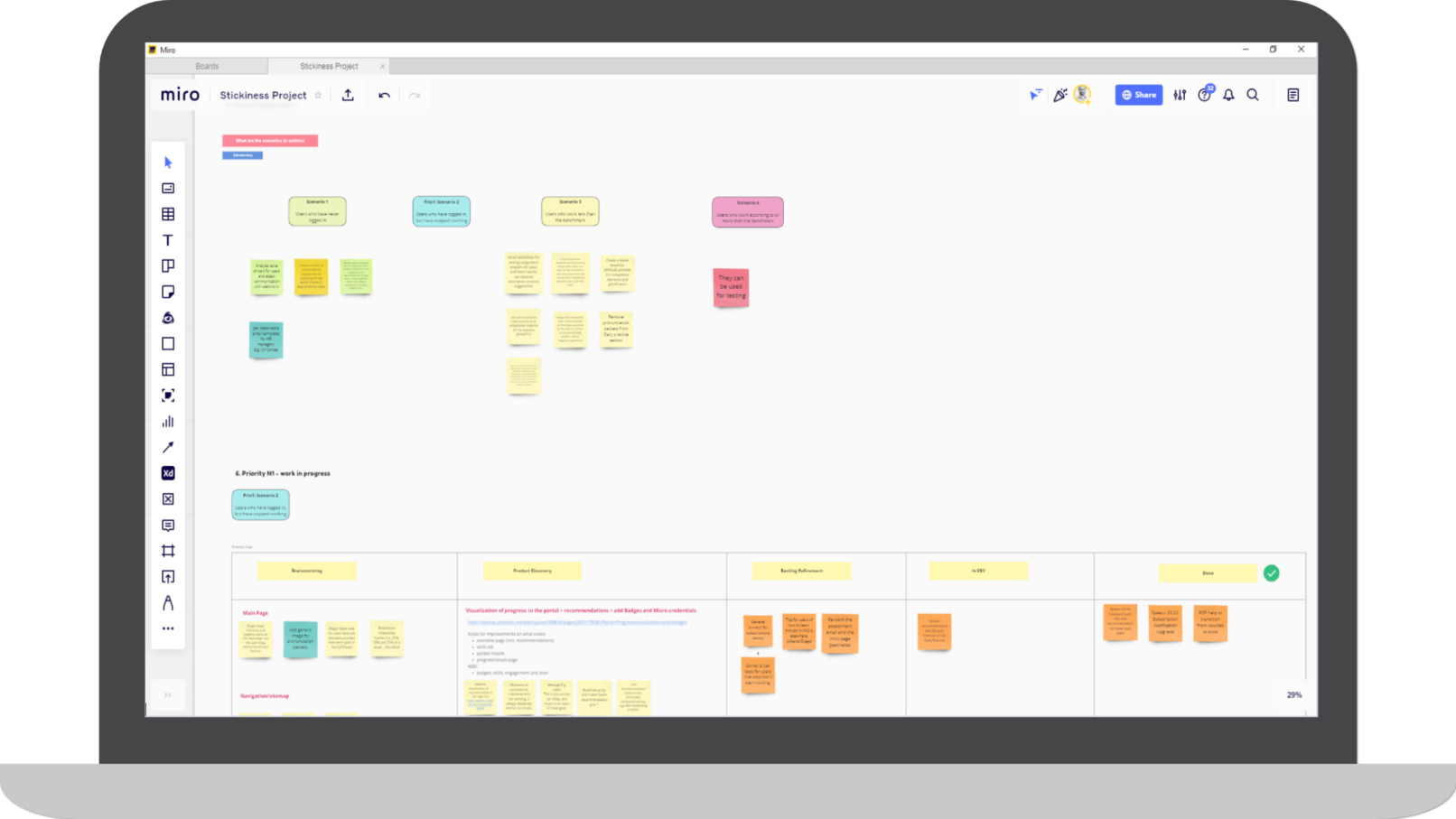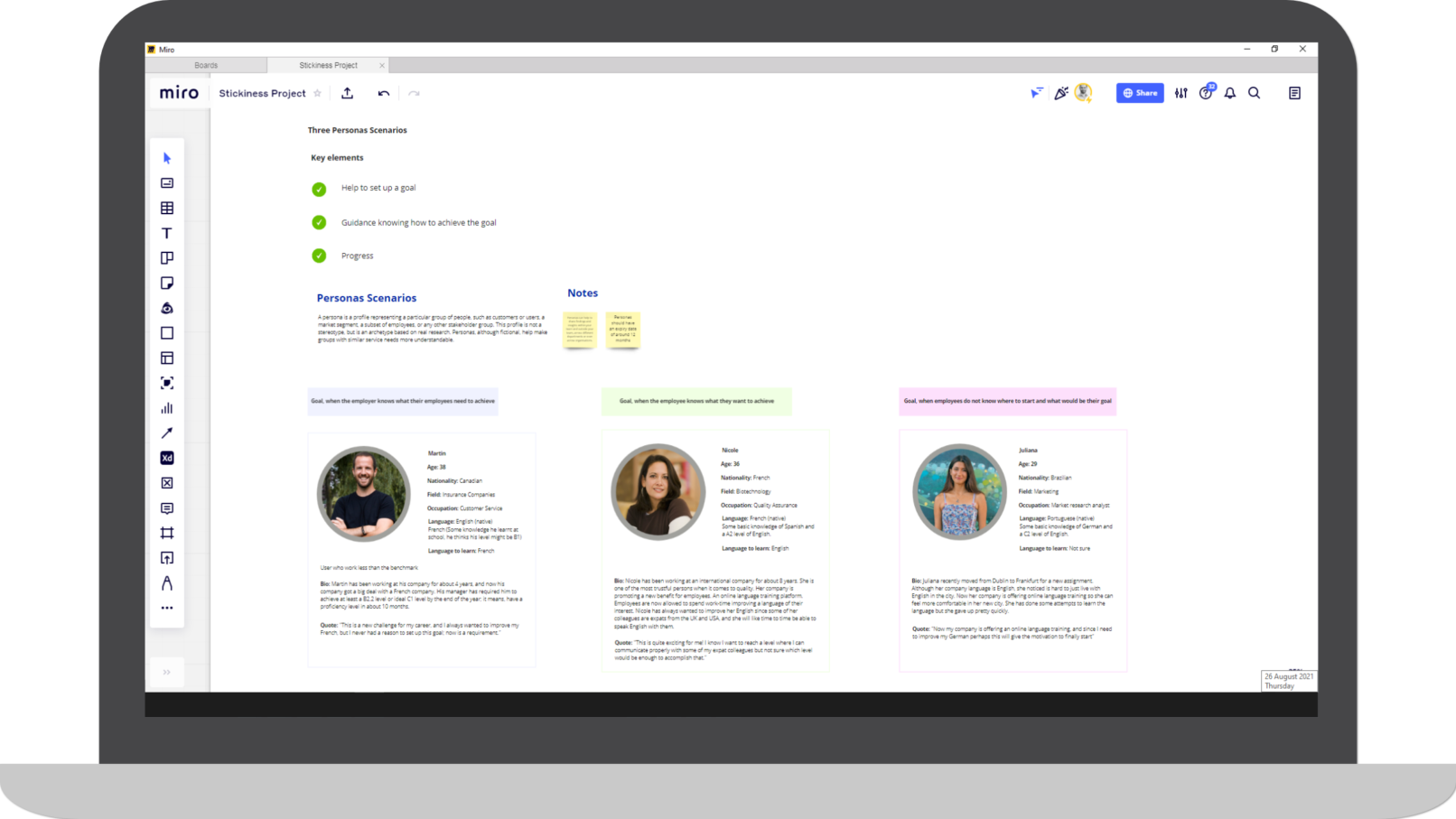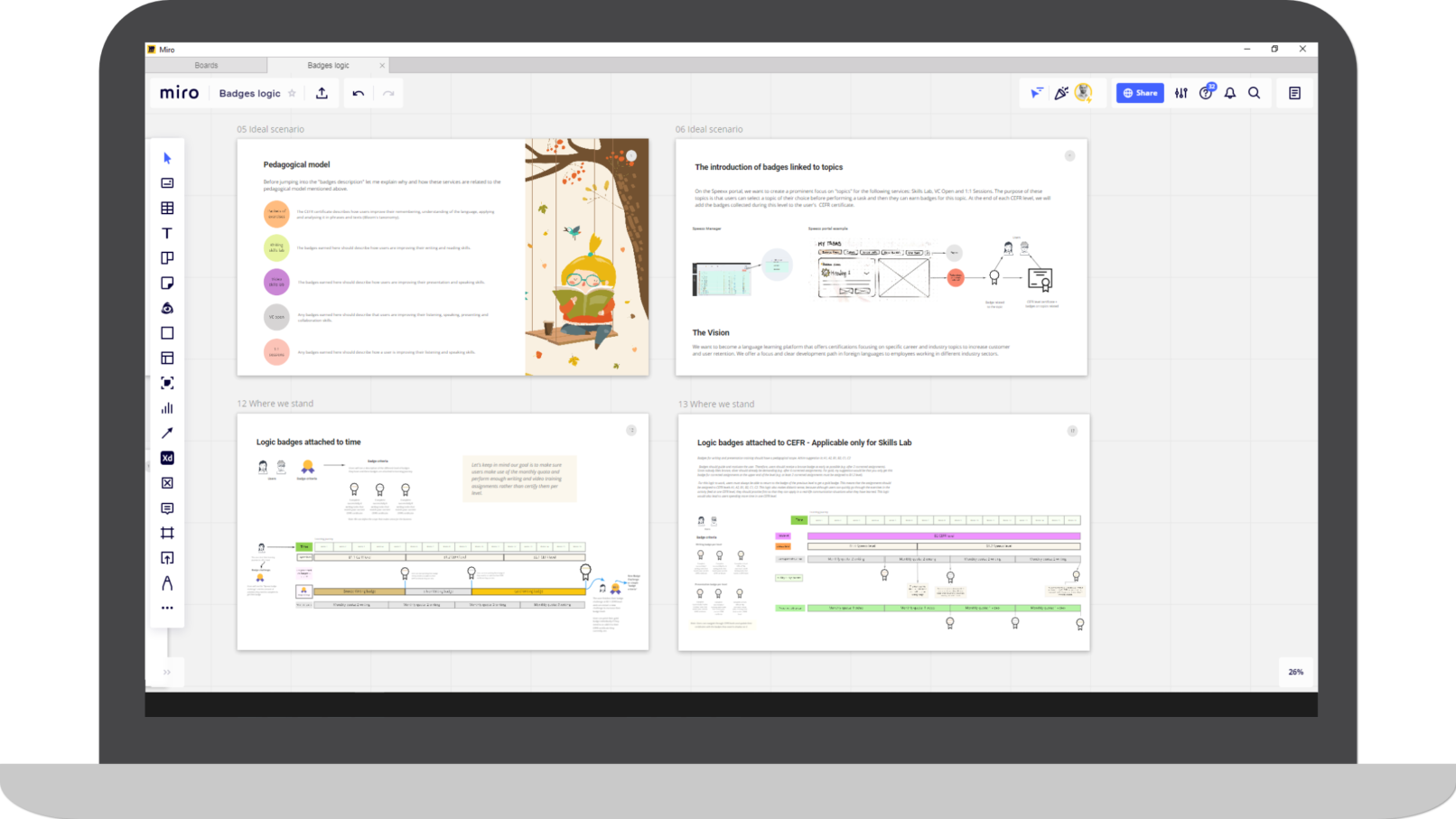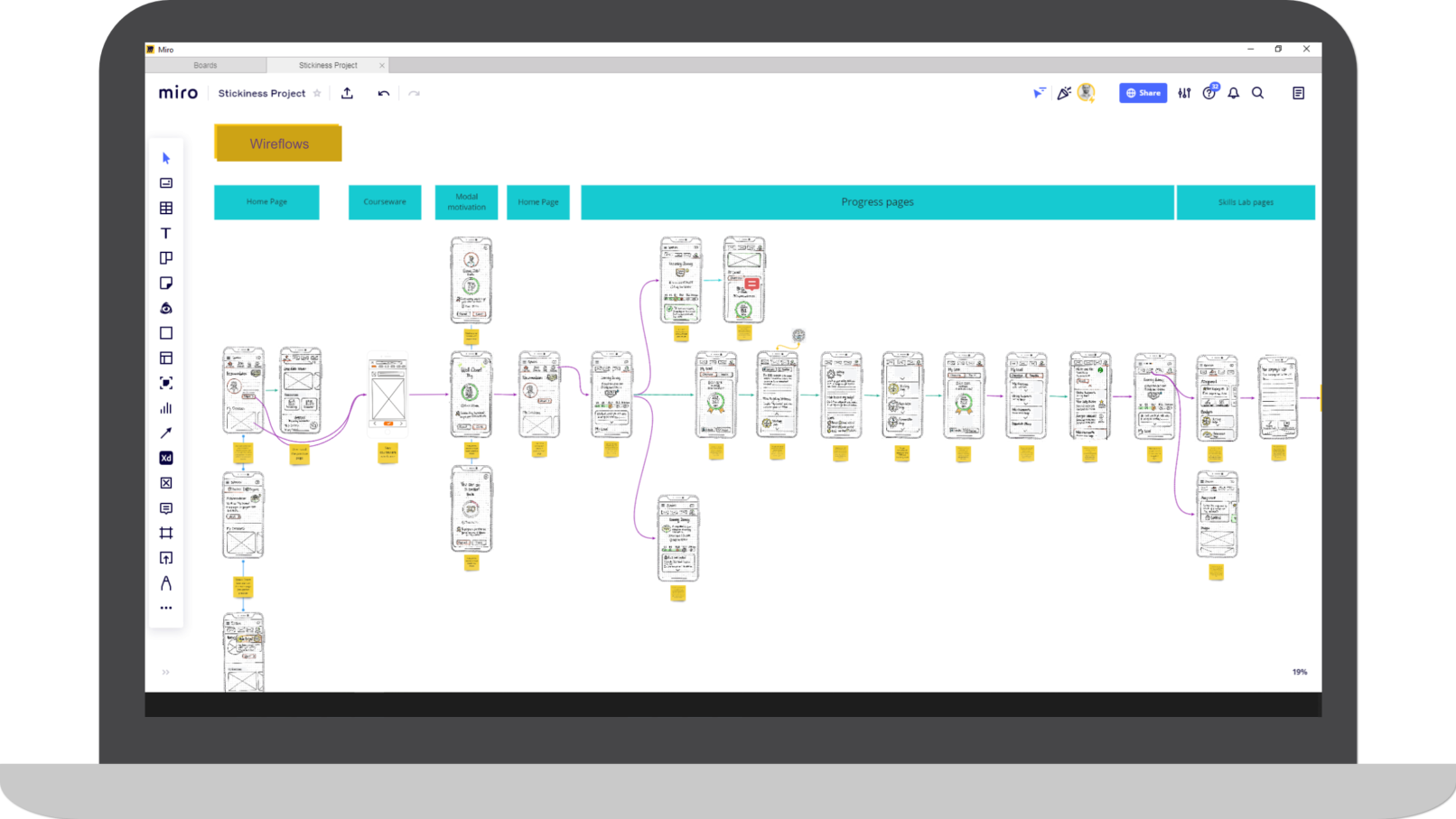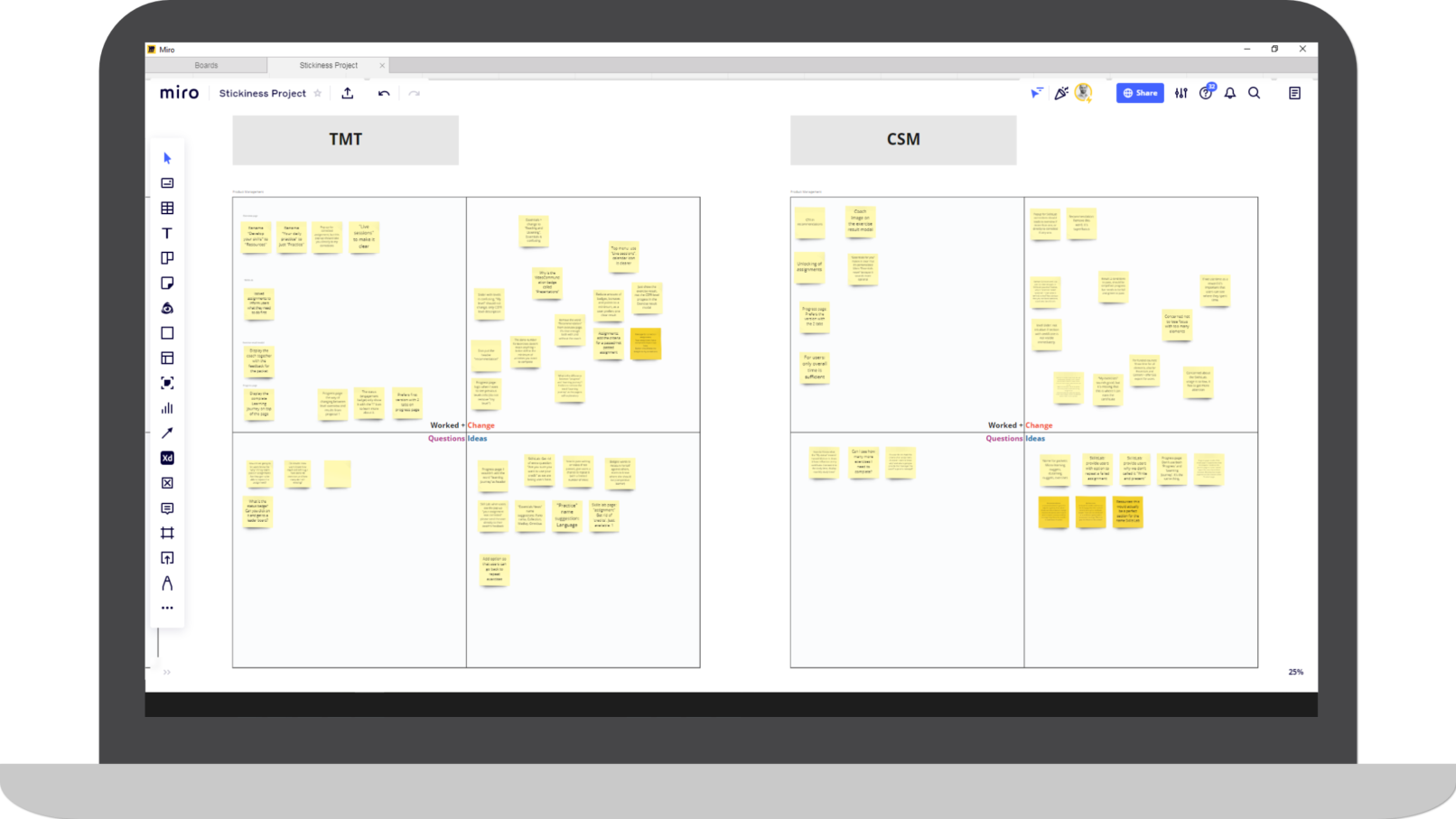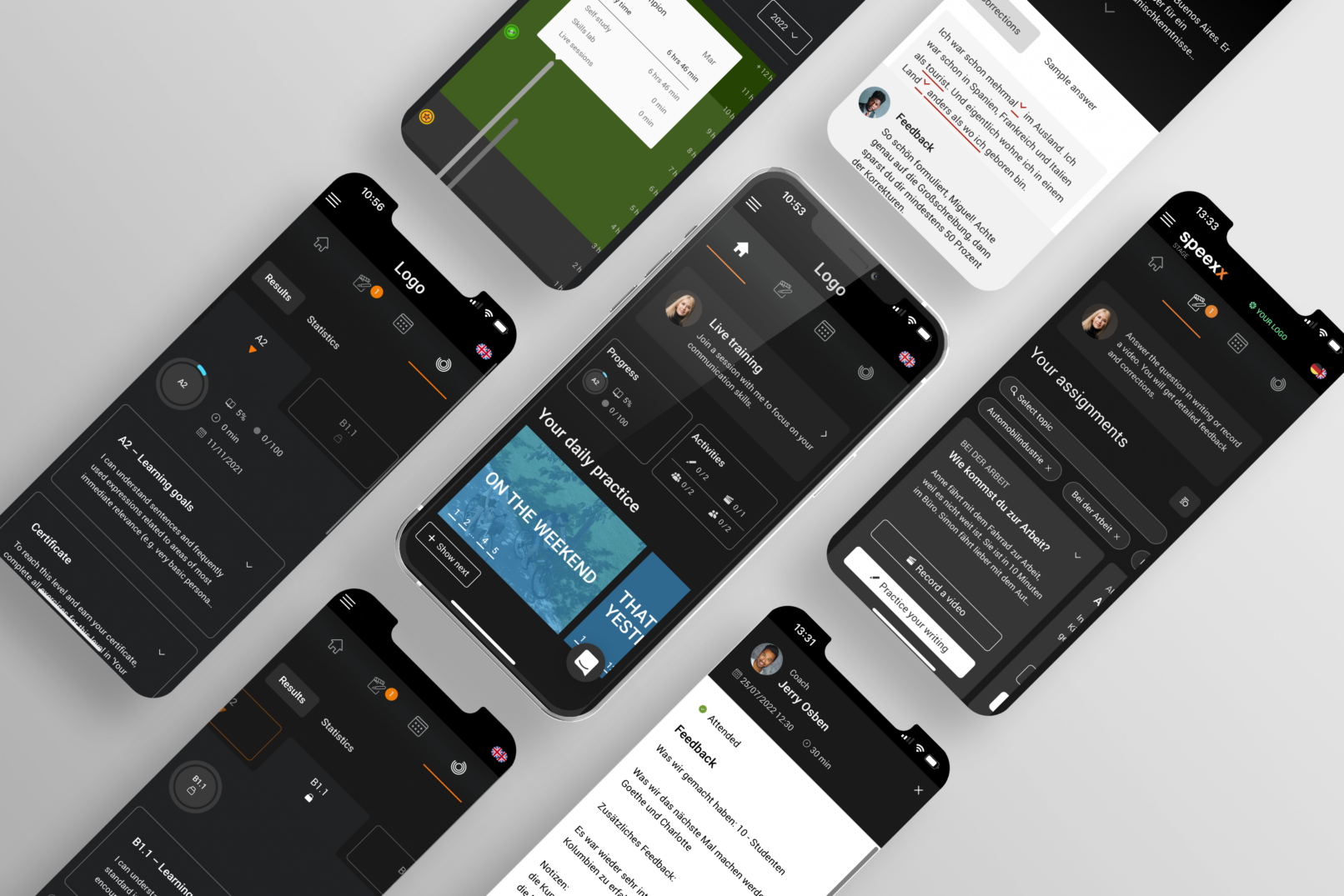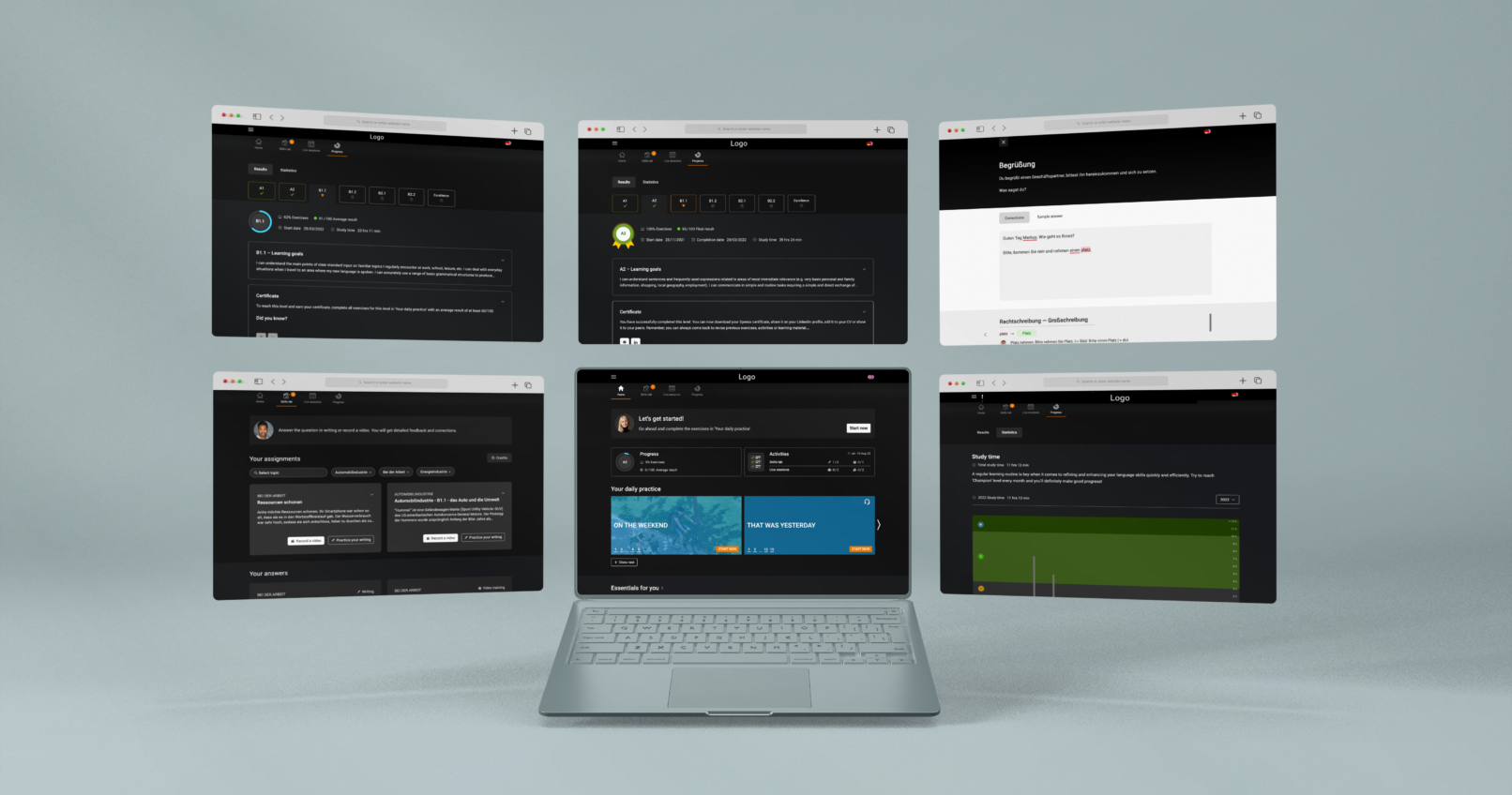Stickiness Project
Context
After a research done with Speexx’s product management team, we discovered that users were not making full use of the possibilities given by the learning portal. This is why the product management department initiated the “stickiness project”; we wanted users to keep returning to the portal to use it to its full potential, thereby satisfying the customer’s requirements.
Challenge
Speexx offers their products exclusively to other companies (B2B). This means that the customers are not the end-users. One of the big challenges with this business model, is satisfying customers and users simultaneously where customer requirements need to be translated into intuitive and user-friendly final products.
Research
We implemented surveys and interviews to understand the initial situation as part of the primary research. Secondly, we explored learning trends on how to reward students, such as badges and clear learning journeys.
Design
After having a better understanding of what users were facing and after a deep exploration of reward learning systems, the team started an intensive phase of concept development, design requirements, blueprints, sketches and prototyping. A frequent alignment between the development team and my team was vital for the successful implementation of the project.
Validation
We built high-fidelity prototypes to test with real users. The selection of the users was based on a description of the 3 different contexts where our users face the defined pain points (as an alternative to personas). User testing was essential to validate assumptions and final usability improvements before development.
Development
The project was developed successfully. The implementation was done in 6 scrum sprints to avoid bottlenecks so that parallel projects could keep track too. We learned that small releases would progressively impact the company’s performance and the users’ satisfaction.
Impact
The project became one of the most successful in a while regarding product improvements. The use of the learning platforms grew by 48% in that period, and we predicted in one of our KPIs only a growth of 25% after 3 months. The use of the app on mobile phone increase by 30%, where the platform always had the majority of complaints. We also ran a System Usability Scale (SUS) after three months to measure user satisfaction and compared it with results obtained before the project started. The result was also significant, moving from 48% to 70%. The project has also impacted the ways Sales teams pitch the product and their confidence in the product they are selling.
Year
- 2021
Categories
- User research, UX concept, UI design, Instructional design.
Team
- Cross-functional scrum team.
